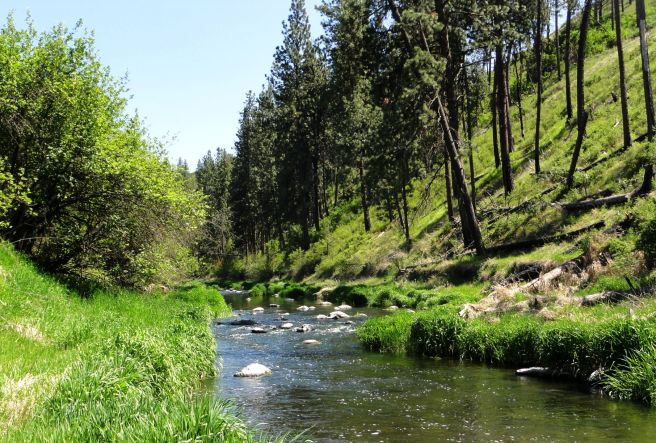What is a Wildlife Corridor?
A Wildlife Corridor is an area in the environment or a landscape that functions as a passage way which increases connectivity between species or a species’ access to other areas of land. Wildlife Corridors are usually habitats that are long in length and connect fragmented patches of habitat by which local species can freely travel between with little risk of predation. Wildlife Corridors can vary in size, shape and composition massively!
Why are they created/used?
Wildlife Corridors can be either natural or man-made. The majority that can be found in the environment are often man-made in the form of hedgerows, constructed surfaces, etc. Whether they are naturally occurring or man-made and meant to look natural, the main goal for a wildlife corridor is to facilitate movement between species in order to improve population structures that may otherwise be isolated.
Isolated populations can be problematic for conservation, as if the population is small, this isolation can cause a reduction in gene flow – the amount of genetic variation among the population – and result in inbreeding, which heightens the risk of local extinction and if continues could result in mass extinctions!
The more movement facilitated between these species, the better chance of improving genetic variation and less inbreeding – species will often extend their ‘range’ in order to seek out a mate during breeding season – this can help reduce inbreeding when there is more choices of mates!
Why are they so important?
Besides reducing the risk of inbreeding and potential local extinction in small isolated populations, wildlife corridors are very important for species’ survival as they often facilitate migration. This is important as many human activities such as urbanisation, and agriculture can fragment and destroy wild species’ habitats as well as reduce available resources necessary for species’ to maintain inhabiting an area such as support, shelter, water and food. The use of Wildlife Corridors can facilitate dispersal and migration of species in their search for new and more suitable habitats!
Additionally, corridors often allow for species to freely roam in search of food, shelter and mates with less risk of being preyed on – which would be a much higher risk if out in the open for long periods of time during their daily travels!
Types of Wildlife Corridors
There are many different types of wildlife corridors; natural, semi-natural and man-made. The differences in wildlife corridors is based on their purpose and these corridors are created (if man-made) on a case-by-case basis!
There are also man-made and semi-natural corridors that have been made from hedgerows – which are used as field boundaries and land ownership – but have been known to be great corridors for local species, as it is safer for travel rather than being out in the broad open fields!
Natural Wildlife Corridors
An example of a natural wildlife corridor would be something like Riperian Corridors – for those who don’t know, Riperian means an area of land adjacent to rivers, streams, wetlands, etc! In this case, a riperian area could be a wildlife corridor as it can link two different isolated populations that inhabit the area!
Natural Corridors follow natural geographic features such as rivers, mountain ranges and little runs made by scavenging animals.

Man-Made Wildlife Corridors
A man-made wildlife corridor is more visually obvious! Man-made corridors are normally in urbanised areas whereby the wildlife corridors have been made to facilitate the movement of wildlife that once lived where urbanisation has occurred or to help migrating species etc. Either way, these types of corridors are often put in place to minimise human-wildlife conflict.
There are some famous man-made wildlife corridors such as Banff Wildlife Corridor (show below) which facilitates the movement of wildlife across a large motorway, to prevent deaths of species by car collisions, to protect humans from this also and to allow connectivity between, what would be, isolated populations!








This is a great intro to wildlife corridors – which are becoming increasingly important. Have you heard of the Jaguar Corridor Initiative? It’s an attempt to connect every known breeding population of jaguars, and may well be the most extensive corridor project in existence.
LikeLiked by 1 person
You know I actually have not heard of that project, but I am surprised that I have not because I absolutely love big cat species! That is amazing and an absolutely huge project to undertake! I would love to know more about that!
LikeLiked by 1 person
If you want to know more about the Jaguar Corridor Initiative, I’d recommend you visit Panthera’s website at Panthers.org. They’re the group that’s spearheading the project. Alan Rabinowitz’s book An Indomitable Beast also goes into a lot of detail about how the project came about and why it matters.
LikeLiked by 1 person
Oh very good! I have been on the Panthera website before when I was looking at Snow Leopards and the work they were (and still are) doing for them! I would absolutely love to read more about this Jaguar project! I have a huge interest in the use of corridors for wildlife – especially with small and isolated populations! I would definitely like to read that book, thank you very much for all the information!!
LikeLiked by 1 person
I’m glad I could help! Your interest in wildlife corridors is most timely, since they’re going to become increasingly necessary. If you want to learn more about using corridors to connect small and isolated populations of animals, I have a post about the importance of corridors for tiger conservation. Here’s the link:
LikeLiked by 1 person